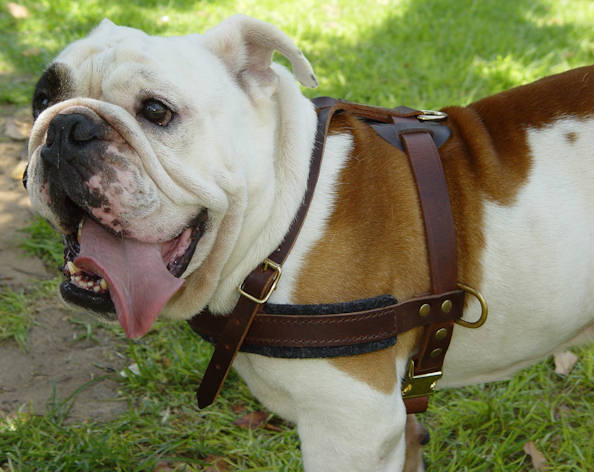
The Bulldog was developed in England around the 13th century from the ferocious Alaunt, a powerful vicious dog whose Molossian ancestors were brought to Britain by Phoenician traders around the 6th century BCE. Bull baiting was a popular sport since the Roman days, and most towns had a bull ring. It was a very cruel contest in which the dog had to grab the bull by an ear, the lips or nose and hold on until it brought the animal to the ground. The powerful short, undershot jaw and laid back nose of this British Bulldog were particularly advantageous as it could still breathe while holding on. This action required unbelievable courage, powerful jaws, tenacity and a very high pain threshold. Finally, bull baiting became banned in 1835, but just as dog fighting became the number one sport. A longer jaw was considered necessary for fighting so the breed was crossed to terriers.
The future of this purebred British Bulldog was thus in doubt. Fanciers however, were determined to save it. Viciousness was eliminated by selective breeding within a few generations. A breed club was formed with the motto, "Hold Fast" and the English Bulldog club became one of the first to be recognized when the Kennel Club was founded in 1873. For many, it is still known as the British Bulldog, English Bulldog or Old English Bulldog, but nowadays it is usually referred to as simply, the Bulldog. This sometimes leads to confussion because there is an American Bulldog.
Retaining all the admirable traits of courage and tenacity, the English Bulldog is now a gentle, very affectionate, kind dog, excellent with children, not vicious or aggressive at all. Any sized home will do as long as it can enjoy the close company of its family. English Bulldog is not a noisy breed, but will bark if it detects a stranger. Early lead training for an English Bulldog puppy is recommended.
Old english bulldog dog harness, old english bulldog dog muzzle, dog collar for old english bulldog click here!
